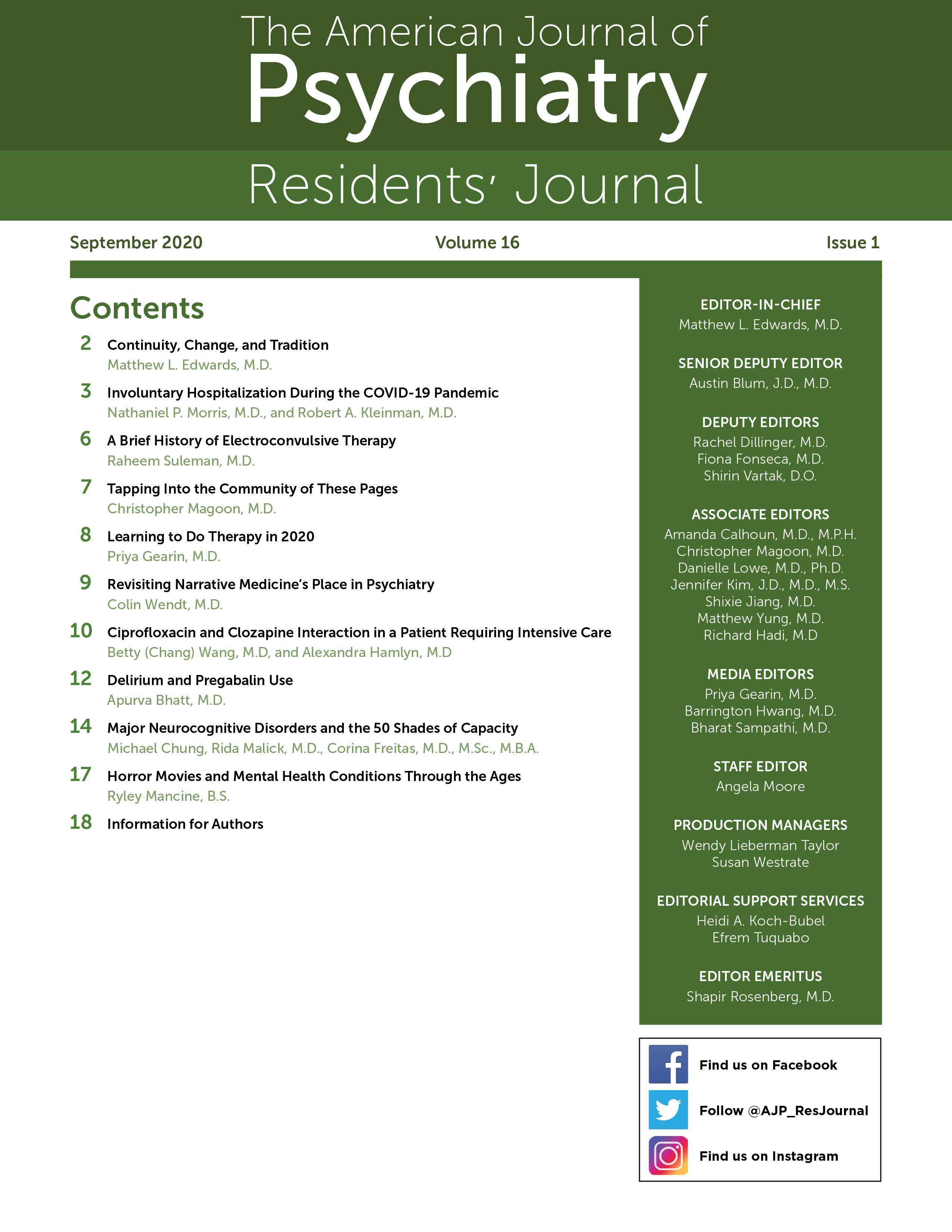Since the early 1900s, the horror genre in movies has provided an escape from the mundane. Horror movies are unique in that they have reflected and influenced how the public views mental health conditions since the dawn of cinema. The Cabinet of Dr. Caligari, released in 1920, demonstrates one of the first associations in film between dangerousness and psychiatric conditions. Not until the film’s ending is it revealed that the protagonist’s struggle against a megalomaniac physician throughout the movie is actually a psychiatric patient’s struggle against his psychiatrist. As such, The Cabinet of Dr. Caligari was a springboard for psychiatric conditions to become a focal point of the horror genre.
One of horror’s most iconic portrayals of a psychiatric condition was in a film released in 1960, Alfred Hitchcock’s film Psycho. The protagonist, Norman Bates, who commits several murders, demonstrates many features of dissociative identity disorder (DID). Because DID was not well explored in media at the time, many interpreted the delusions and disorganized thought of Norman Bates as schizophrenia. As a result, audiences generalized the two disorders as one. Psycho portrayed a psychiatric condition coupled with a new, heightened level of violence on the silver screen, which perpetuated negative stereotypes of violence by psychiatric patients.
In the 1970s, the horror genre became immensely popular. The 1975 film One Flew Over the Cuckoo’s Nest depicted life inside a psychiatric institute. A terrifying scene regarding the use of electroconvulsive therapy so frightened audiences that it has been perpetuated in numerous other horror movies, such as the 2010 film The Ward. Electroconvulsive therapy remains an instrument of torture in modern films. John Carpenter’s noteworthy 1978 film Halloween tells the story of Michael Myers, who at age 6 murders his sister and is committed to a psychiatric facility, escaping 15 years later and murdering others in his hometown. In the film, psychiatrist Dr. Loomis refers to Myers as unable to determine "good or evil, right or wrong," reinforcing the narrative of dangerousness associated with psychiatric diagnoses.
Following the success of Halloween, Stanley Kubrick’s The Shining was released in 1980. The Shining follows Jack Torrance, a man recovering from alcohol use disorder, who has delusions and develops psychosis over the course of the film. Although this movie attempts to explain the delusions by using spirits, audiences widely regarded Jack Torrance as the "crazy" axe-murderer from The Shining. The narrative of "dangerous psychopaths" doesn’t end with The Shining, however, because the 1980s and 1990s largely mirrored the 1970s. Those decades spawned numerous movies featuring murderers, such as Jason Voorhees from the Friday the 13th series, who experiences auditory hallucinations, and Annie Wilkes from the film Misery, who demonstrates symptoms of bipolar disorder.
Although movies continue to push the association between psychiatric diagnoses and dangerousness, the trend has begun to shift. The 2014 film The Babadook chose to capture the process of dealing with prolonged grief following the death of a woman’s husband, rather than focusing on a psychiatric diagnosis. Some people also cite the 2015 film They Look Like People as positive, because a social support network is consistently present while the main character struggles with psychosis. Although those two films are not perfect in their portrayal of mental health conditions, they showcase steps in a positive direction. The current shift in the genre poses an interesting question: Does a psychiatric diagnosis serve as a scapegoat for horrific scenarios, or does psychiatry’s haunting history play its own role in the development of scary movies? Does the harrowing past of pacification through lobotomy and underfunded, overpopulated mental health institutions play a role in the creation of these films? Despite the perspective, the recent positive shift in how the media portray an individual with a psychiatric diagnosis is a turn in the right direction.
